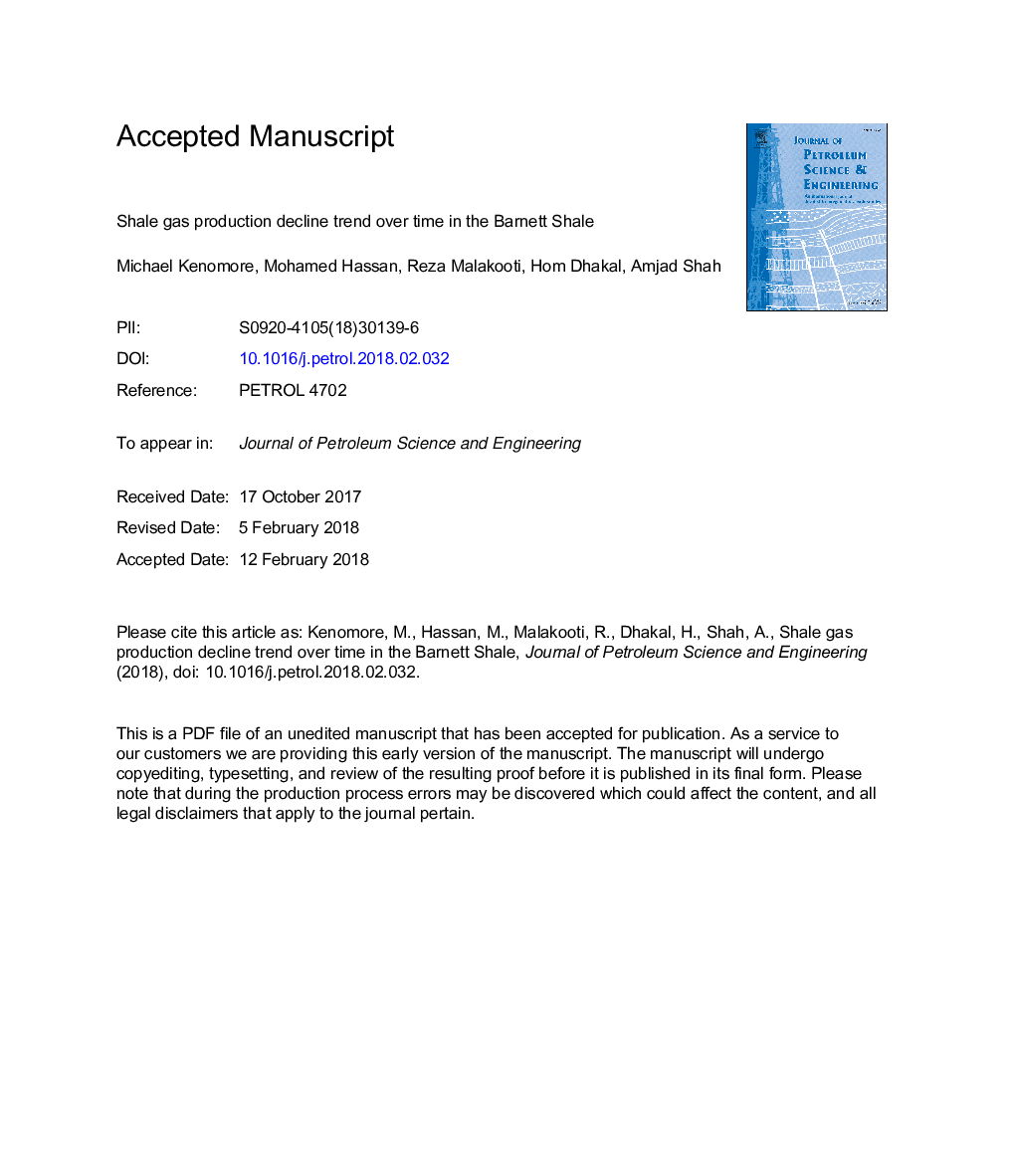| Article ID | Journal | Published Year | Pages | File Type |
|---|---|---|---|---|
| 8125120 | Journal of Petroleum Science and Engineering | 2018 | 37 Pages |
Abstract
Natural gas produced from shale formations in the United States over the past decade have altered the oil and gas industry remarkably. The Barnett shale was at the forefront of the shale gas revolution in the United States and was considered to be the highest producing natural gas field in the United States until 2012, yielding the top producer spot to the Marcellus shale. Due to the uncertainty regarding the accurate determination of Estimated Ultimate Recoverable (EUR) in shale gas reservoirs, this paper aims to assess EUR values for the Barnett shale using empirical decline curve methods like the Arp's hyperbolic, Modified Arp's hyperbolic and Doung's method. In addition, we investigated the economic viability of wells over time in the Barnett under various probabilities of success. Throughout this paper, reference is made to two key publications where a similar work was carried out for various shale plays in the United States, including the Barnett shale - though only the Arp's hyperbolic decline was employed. The dataset in this paper consisted of more horizontal wells from covering more counties within the Barnett shale compared to other similar studies. We conclude that either the Arp's hyperbolic or Doung's method can be used to forecast EUR in the Barnett shale as only marginal differences were observed. This is on the basis that production history exceeds 10 months (a maximum of 80 months production history was used). We also obtained reliable and conservative estimates of EUR compared to previous studies.
Related Topics
Physical Sciences and Engineering
Earth and Planetary Sciences
Economic Geology
Authors
Michael Kenomore, Mohamed Hassan, Reza Malakooti, Hom Dhakal, Amjad Shah,
